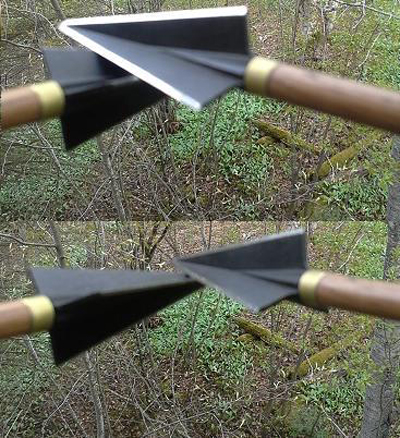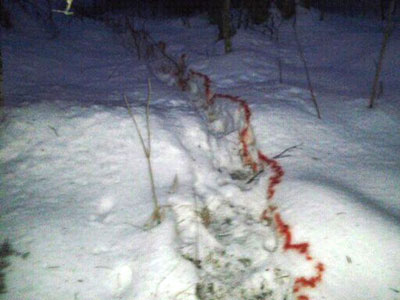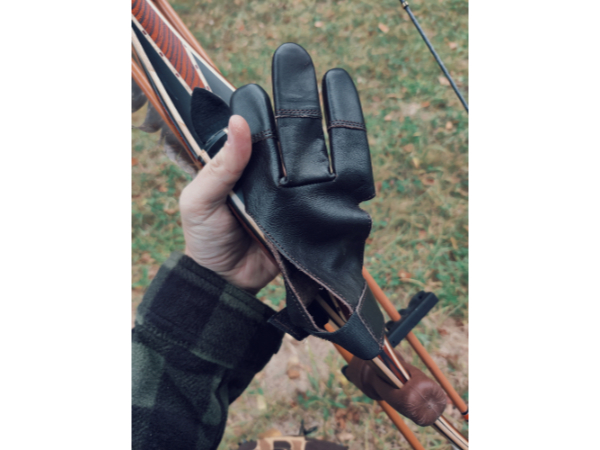I sharpen my broadheads until they can pass what I refer to as the “sticky” test. I balance the edge and weight of the broadhead on a fingernail and apply a small amount of force. If the edge sticks in place and does not move, it’s “sticky” sharp. If the broadhead scoots off the end of the nail easily, it is not “sticky” sharp, but might still be considered adequate. However, who wants merely adequate broadheads?
 After some time, broadheads will lose their sharpness (perhaps due to moving the arrows in and out of the quiver) and will no longer pass the “sticky” test. Usually I test my broadheads when I become bored while sitting in my tree stand and looking for something to do. Invariably, I fail to have my diamond sharpening stone with me, but I have come up with an intermediate remedy to touch up the edges.
After some time, broadheads will lose their sharpness (perhaps due to moving the arrows in and out of the quiver) and will no longer pass the “sticky” test. Usually I test my broadheads when I become bored while sitting in my tree stand and looking for something to do. Invariably, I fail to have my diamond sharpening stone with me, but I have come up with an intermediate remedy to touch up the edges.
Three-blade heads such as the Woodsman, are very easy to touch up because you can face two blades together on each head. Start by holding one arrow-mounted broadhead securely in your lap. Set another one on top making sure the blades are in flush contact with each other. Then apply slight pressure while moving the top head along the bottom head until the tip is reached. For single bevel heads, you have to be very careful to keep the blades faced. Keep in mind that this intermediate remedy is not a sharpening method; it is only to be used to touch up a previously razor-sharp head. The results will not be as precise as sharpening on a diamond stone at home, but may help produce a better blood trail.
 Although my intermediate remedy works on the three-blade Woodsman and single bevel Grizzly broadheads I use, it may not work on every style of broadhead. The important thing to remember when using my intermediate method is to keep the honed edges faced together in order to reestablish a microscopic burr. If that is accomplished, the head should be closer to passing the “sticky test” again.
Although my intermediate remedy works on the three-blade Woodsman and single bevel Grizzly broadheads I use, it may not work on every style of broadhead. The important thing to remember when using my intermediate method is to keep the honed edges faced together in order to reestablish a microscopic burr. If that is accomplished, the head should be closer to passing the “sticky test” again.







It looks like your method works, nice blood trail. Congrats on your harvest.
The LAST (never) thing I’m going to be doing is trying to hone or otherwise mess around with sharp broadheads in my tree stand! This is one of the silliest articles I have seen. Broadhead honing should be done on the ground, At the truck or back at camp. If you have to take chances honing broadheads in the stand you’ve got a bunch of other problems to take care of, my friend. Least of which is time management. Your gear needs to be A-1 shape when you walk into the woods, not a project to do when you get bored on stand. What happens if you slip and cut yourself with one of those super sharp heads and you’re 20 feet up in a tree? How much noise is the average guy making while he is doing this and what is going on around you while you are concentrating on sharpening your heads? What if you fumble and drop an arrow out of your stand. Dull head is what. No, hone your heads at home and concentrate on HUNTING while you are out hunting
MY OLD LEATHER ARM GAURD WORKED WELL FOR ME WHEN TIMES WERE BORING AND I NEEDED TO TOUCH UP AN EDGE. THE ARM GAURD ISN’T PRETTY ANYMORE BUT MY EDGES ARE.